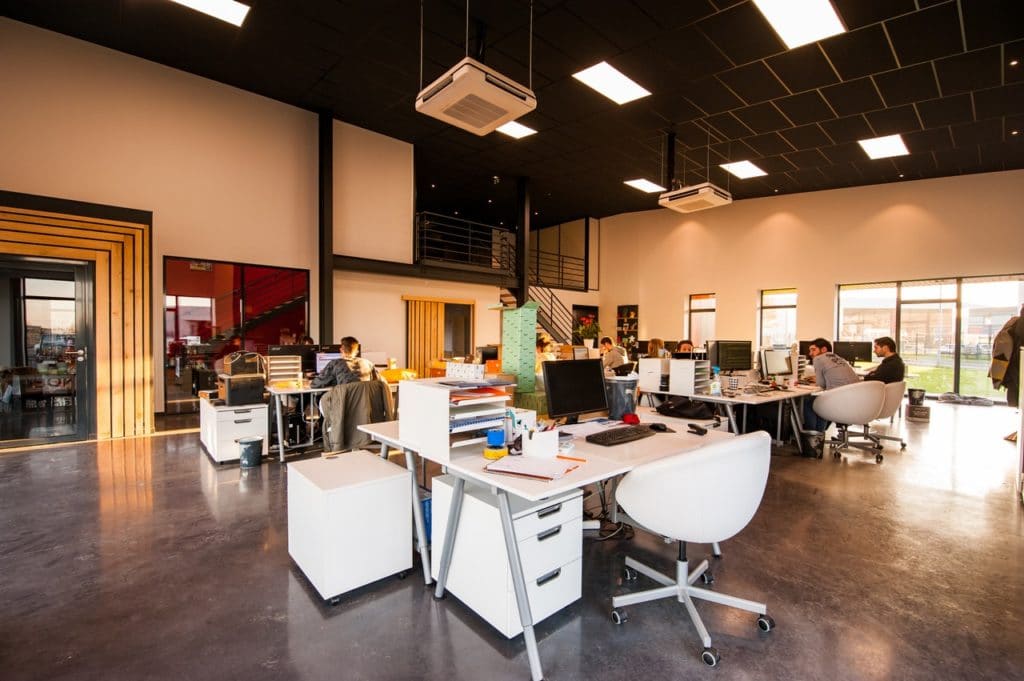The days of the open office space are slowly coming to an end. This relatively short-lived trend was supposed to infuse collaboration and brainstorming into the workplace, with communal tables and desk spaces, and very few walls.
There were merits with the open office space design, such as the sense of equality and transparency that these designs could evoke.
What a lot of business owners have found, is that some problems come with open office design as well. Namely, these concepts can significantly reduce productivity and focus on employees. A lot of employees will go as far as saying they hate open office design. They seem to miss the days of office furniture and layouts that gave them a sense of seclusion and quiet so they could focus.
While open office spaces aren’t all bad, many workplace leaders are trying to reintegrate quiet spaces back into their designs. Even if they don’t altogether eliminate the open areas of the workplace, adding some quiet zones can help boost productivity, employee engagement and employee satisfaction.
The following are some things to know about integrating quiet zones into workplace design and some tips for doing so.
The Logistics of Reducing Sound
Sound is a big problem in a lot of bustling, modern offices, even when they aren’t currently utilizing open office designs. There are cell phones, conversations and the constant pinging of various forms of technology and messages that surround employees at work.
However, just trying to reduce sound isn’t going to cut it in most cases because that can then make certain sounds stand out even more. For example, if it’s fairly quiet in an office, but there are a few conversations going on, those can become very distracting.
It’s a good idea to try and group your quieter areas close to each other, and then do the same with the higher-energy places or the places that are likely to be noisier.
Provide a Visual Connection to Other Parts of the Office
When you think about focus and concentration, quiet is important, but at the same time, if employees are in a space that visually cuts them off from the activity happening in the workplace, it can actually reduce productivity.
A good thing to have is an area that is quiet and where employees can go to escape the noise, but also one where they have a visual connection to the rest of the office. Semi-private spaces with glass walls or some way to see more energized areas of the office can be good for concentration.
Something that can be mentioned here is the fact there is a difference between a quiet zone and a private zone. A quiet zone doesn’t necessarily have to mean people aren’t collaborating and working together. There could be minimal noise happening as well.
A private zone is an area of the office where employees can go when they want their coworkers to know they are absolutely working alone. A private zone will usually have a door and may have less of a visual connection to the rest of the office. These individual workstations shouldn’t include seating for multiple people. Having a private area is one of the easiest ways to let employees have control over their work environment and signal to others they aren’t available for conversation at the moment.
Provide Choice
If you’re thinking about integrating a quiet zone into your workplace, you might want to do a few different styles instead of one zone. Employees like to have a sense of freedom and autonomy in how they work—it’s good for productivity and their engagement.
What can work well here is implementing modular-style furniture that can easily be moved and changed depending on the needs of employees. Modular and flexible office furniture can also scale with your business as needed.
When you think about having flexible workplace furniture and design, employees have the freedom to create their own quiet zones when they choose, or to collaborate when that’s more appropriate. You’re not tied down to such a rigid workplace environment.
Finally, even if your office is in a big, open space, you can still create walls when necessary. A wall isn’t always something that’s a fixed part of your architecture. For example, curtains and screens can work well as walls or dividers. Again, this can be a flexible way to design your office as well, and it puts a lot of the choice into the hands of employees.





